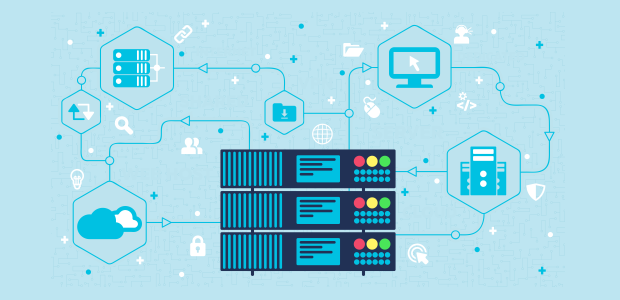自托管网站或应用程序可确保您完全控制数据、性能和自定义设置。这看似很复杂,但只要有正确的指导,任何人都可以掌握自托管的艺术。本文将引导您完成设置和保护自托管服务器所需的所有知识,并将其分解为易于理解的步骤。
目录
- 自托管概述
- 选择自托管服务器类型
- 选择正确的硬件
- 选择最佳操作系统
- 自托管的最佳安全实践
- 设置域名
- 安装和配置 Web 服务器
- 启用 SSL 进行安全连接
- 设置电子邮件服务器
- 实施备份解决方案
- 监控和维护
自托管概述
自托管是设置、配置和管理您自己的服务器以托管您的网站、应用程序或任何其他在线内容的过程。这使您可以完全控制您的服务器,从而提高安全性、灵活性和性能。自托管涉及的主要步骤包括:
- 选择服务器类型
- 选择硬件
- 选择正确的操作系统
- 实施安全措施
- 注册域名
- 安装 Web 服务器
- 设置电子邮件服务器
- 定期备份
- 监控和维护
选择自托管服务器类型
有多种自托管服务器类型可供选择,每种类型都适合不同的需求。最常见的服务器类型是:
- 物理服务器: 这些是在您自己的设施或数据中心维护的现场服务器。
- 虚拟专用服务器 (VPS): 这些是托管在远程物理服务器上的虚拟服务器,提供专用资源。
- 云服务器: 这些是托管在远程或多个物理服务器上的虚拟服务器,是称为云基础设施的更大网络的一部分。
每种服务器类型都有其优点和缺点;物理服务器提供最多的控制但需要大量投资,而云服务器提供可扩展性但控制力可能较弱。
选择正确的硬件
为自托管服务器选择硬件时,请考虑以下方面:
- 中央处理器: 根据您预期的工作负载确保服务器具有足够的处理能力。
- 内存: 充足的内存可确保您的服务器和应用程序的顺利运行。
- 贮存: 根据您的要求选择正确的存储容量(硬盘、SSD)和速度组合。
- 网络接口: 选择具有快速网络接口的服务器,最好是千兆以太网,以获得最佳的数据传输速度。
选择最佳操作系统
操作系统的选择取决于您的熟悉程度和要求。最流行的服务器操作系统是:
- Linux: 各种免费的开源发行版,具有出色的性能和安全功能。
- Windows 服务器: 由 Microsoft 设计的强大的服务器操作系统,非常适合具有现有 Microsoft 基础架构的企业。
虽然 Linux 更具可定制性和成本效益,但 Windows Server 与 Microsoft 应用程序和服务的集成更加无缝。
自托管的最佳安全实践
为了增强自托管服务器的安全性,请遵循以下最佳做法:
- 保持一切更新: 定期更新您的操作系统和所有安装的软件,包括您的网络服务器、数据库服务器和任何应用程序。
- 配置防火墙: 设置防火墙来阻止不必要的流量并仅授予必要服务的访问权限。
- 启用入侵检测: 安装入侵检测软件来监控安全威胁。
- 加密数据: 使用 SSL 和 HTTPS 等加密工具保护敏感数据免遭拦截。
- 实施强密码: 创建强大而独特的密码,并要求对访问服务器和关键服务进行身份验证。
- 限制用户权限: 限制用户对服务器的访问,并仅向授权用户授予必要的权限。
设置域名
域名是您网站的网址。要设置域名:
- 选择域名注册商: 选择一家信誉良好的域名注册商来注册您的域名,并考虑价格、客户支持和附加服务等因素。
- 检查域名可用性: 使用注册商的域名搜索工具查找代表您品牌的可用域名。
- 注册域名: 完成注册过程并配置域名以指向您的服务器的 IP 地址。
- 续订域名: 跟踪您的域名的到期日期并及时续订以避免失去对域名的控制。
安装和配置 Web 服务器
网络服务器负责向访问者提供您的网站内容。最受欢迎的自托管网络服务器是:
- Apache(适用于 Linux 和 Windows)
- Nginx(适用于 Linux 和 Windows)
- IIS(仅适用于 Windows)
选择最适合您需求的 Web 服务器,并按照官方文档安装、配置和优化您的服务器。定期更新您的服务器软件并遵循上文概述的安全最佳实践。
启用 SSL 进行安全连接
SSL 证书可加密您的网站与访问者之间交换的数据,从而提高安全性和访问者信任度。要启用 SSL,请执行以下操作:
- 选择 SSL 提供商: 选择信誉良好的 SSL 提供商,例如 Let's Encrypt(免费)或商业实体。
- 生成 SSL 证书: 按照您选择的提供商的指南来生成和验证您的 SSL 证书。
- 配置你的 Web 服务器: 更新您的网络服务器设置,以利用您的 SSL 证书通过 HTTPS 为您的网站提供服务。
- 更新您的网站代码: 修改您网站的代码以确保所有资源都通过 HTTPS 安全地提供。
设置电子邮件服务器
电子邮件服务器负责处理您域的收发电子邮件。要设置电子邮件服务器,请执行以下操作:
- 选择电子邮件服务器软件: 选择电子邮件服务器软件,如 Postfix、Exim 或 Microsoft Exchange,考虑与您的操作系统和要求的兼容性。
- 安装并配置电子邮件服务器: 按照软件的文档安装和配置服务器,包括邮箱、身份验证和发送/接收限制。
- 配置 DNS 记录: 将 MX、SPF 和 DKIM 记录添加到您的 DNS 设置以启用邮件传递并防止垃圾邮件和欺骗。
实施备份解决方案
定期备份对于防止数据丢失和确保故障后快速恢复至关重要。有效的备份策略如下:
- 选择备份解决方案: 选择适合您的需求和预算的本地或基于云的备份解决方案,确保与您的操作系统和服务器软件兼容。
- 配置备份设置: 定期设置自动备份,旨在混合进行完整备份、增量备份和差异备份。
- 测试备份恢复: 定期测试恢复过程以确保备份解决方案的可靠性。
监控和维护
有效的监控和维护对于自托管服务器至关重要。关键策略包括:
- 监控服务器性能: 定期监控服务器健康指标,如 CPU 使用率、内存使用率和网络速度,以便及时发现和解决问题。
- 监控网站正常运行时间: 利用正常运行时间监控工具确保您的网站可用且可供访问者访问。
- 安排定期维护: 留出定期的时间进行服务器维护和更新。
有了正确的硬件、软件和安全措施,您就可以自信地踏上自托管之旅,享受更大的控制力、灵活性和性能。积极主动地进行监控和维护,以确保自托管服务器的持续稳定性和成功。



















